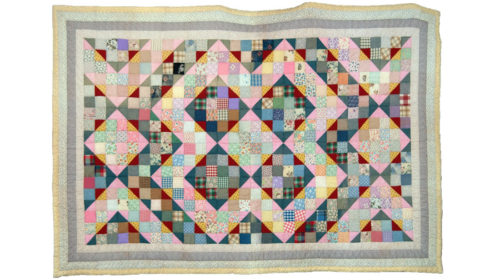Beginning in the mid-1800s, Ladies Aid Societies were formed for the purpose of assisting their local churches socially and financially. Because they were not part of the formal structure of the churches, little is known about their early years; however, in 1927 one Methodist church historian wrote, “The Ladies Aid Society is the backbone of most of our Churches . . . and the most indispensable agency in the Church.”
Greene-Dreher churches depended on their Ladies Aids to help meet current expenses, which might otherwise have shown serious deficits if it weren’t for their faithful and tireless work. When a building project was launched, the Aid was expected to, and did, make the biggest contribution. When the village of LaAnna was contemplating building a church, the first thing they did was form a Ladies Aid, and it was largely through their efforts in mustering community support and raising much-needed funds that the new church was possible.
Each Ladies Aid drew up its own rules and planned its own fundraising activities. They would meet weekly during the winter months at the home of a member, where they would enjoy a covered dish noontime dinner. There was always a variety of dishes, but none to duplicate the hostess’s specialty. The president might conduct a short business meeting, opening with a reading from the Bible. And then, the needlework would begin. The women would gather round the quilt frame and share the work, and the pleasure, of quilting together. They would deftly apply thousands of tiny stitches to outline the intricate design and sew the layers of the quilt top together, all the while chatting, laughing, and enjoying the camaraderie of their artistic endeavor.
The Ladies Aids had many seasonal and delightful ways of making money. In summer they might host ice cream socials or strawberry festivals held on church grounds, and in winter there would be oyster suppers and chicken dinners served at the church, and everyone would come regardless of religion. Occasionally a play or an “entertainment” was presented consisting of recitations and songs, followed by food and fellowship. The admission price was nominal. The proceeds went to the church, frequently to some particular cause.
The most popular event was their annual Bazaar where they sold their handmade quilts. While they also sold a variety of handmade fancywork, fundraising quilts were their primary source of revenue. Perhaps because of their long-standing association with warmth and comfort, quilts became the perfect means to support the church, and they continued this time-honored tradition well into the 1900s. The LaAnna and Hemlock Grove societies continued raising money for their respective churches through quilting into the 1980s, with the last remaining group, Wesley Circle Quilters, disbanding in 2007.
To view a selection of quilts made by local women in the late 1800s and early 1900s, visit our virtual exhibition, “Upcountry Quilts”
